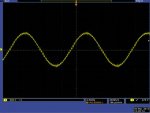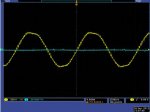There are two identical and unloaded 600:690V, 777kVA autotransformers in parallel feeding off a 12470:600V, 7.5MVA transformer.
Here is the autotransformer primary voltage which look OK:

And this is the autotransformer secondary voltage, the peak part of sine wave seems to be clipped and RMS voltage is only about 650:

Again, there is no load. Anyone has any idea what is going?
Thanks
Here is the autotransformer primary voltage which look OK:

And this is the autotransformer secondary voltage, the peak part of sine wave seems to be clipped and RMS voltage is only about 650:

Again, there is no load. Anyone has any idea what is going?
Thanks

